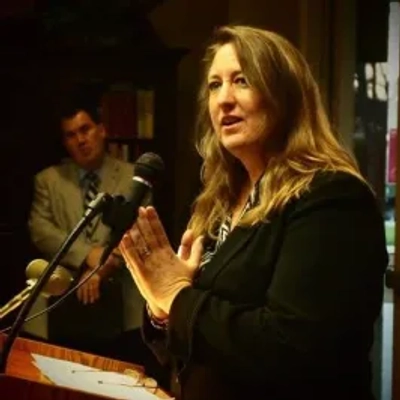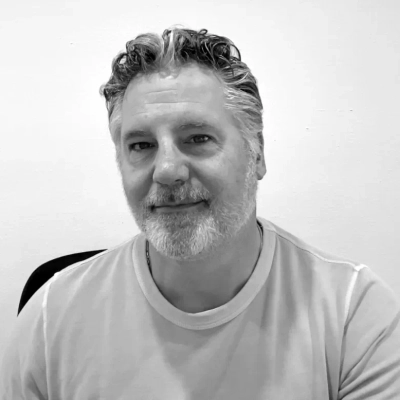How to Tailor Your Resume to a Job Posting
Crafting a resume that stands out in today’s competitive job market requires more than just listing your experiences. This article presents expert strategies for customizing your resume to match specific job postings, increasing your chances of landing an interview. From mirroring job posting language to quantifying achievements, these practical tips will help you create a compelling resume that resonates with potential employers.
- Tailor Resume Language to Job Posting
- Showcase Freelance Work as Professional Experience
- Mirror Job Posting Language in Resume
- Quantify Achievements to Match Job Requirements
- Create Impact-Focused Community Section for Nonprofits
- Use Achievement Mirroring for Strategic Alignment
- Implement Inverted Pyramid Writing for Applications
- Highlight Specialized Modalities in Therapy Resumes
- Craft Before and After Results Section
- Lead with Policy Achievements for Leadership Roles
- Emphasize Problem-Solving Stories for Startup Applications
- Address Pain Points with Quantified Outcomes
- Prioritize Key Results in Resume Structure
- Customize Professional Summary for Each Application
Tailor Resume Language to Job Posting
One tactic I always use—and recommend to my clients—is pulling language directly from the job posting and weaving it naturally into the resume, especially in the summary and bullet points. However, it’s not just about copying keywords. It’s about demonstrating that you understand the company’s priorities and are already fluent in their language.
I once applied for a role that emphasized cross-functional collaboration, strategic thinking, and measurable impact. I knew I possessed those skills, but instead of leaving it vague, I tailored my bullet points to reflect how I had utilized them. For example, rather than saying “Led projects with multiple teams,” I wrote, “Partnered with engineering, marketing, and product teams to launch initiatives that increased user engagement by 35%.” That shift—tying the skill to a result—immediately aligned me with their expectations, and it led to an interview within days.
As someone who has written resumes professionally for over 12 years and helped clients land roles at top companies, I’ve seen this strategy work time and time again. I also make sure to match the tone of the job posting. If it’s written in a data-heavy, results-first voice, I emphasize metrics and impact. If it leans more on culture and values, I include leadership, team building, or mission-aligned achievements.
Another tip: I always write with both the ATS and the human reader in mind. That means using relevant keywords for searchability, but embedding them in real, meaningful accomplishments that tell a compelling story. No keyword stuffing—just authentic alignment.
Ultimately, tailoring a resume is about showing the employer that you’re not just qualified—you’re relevant. And when your resume reads like it was written for the job, not just about you, it creates that spark of connection that leads to interviews.
 Mary Southern
Mary Southern
Founder at Resume Assassin, Resume Assassin
Showcase Freelance Work as Professional Experience
When applying for a front-end developer role at a startup, I only had freelance projects in my portfolio. To showcase my experience effectively, I created a dedicated “Selected Projects” section on my resume and formatted it like a work experience section.
For each project, I included the following details:
1. Project name
2. Brief description
3. Tech stack used
4. Link to the live site or GitHub repository
I focused each description on a positive outcome. For example, “Redesigned a small business website, improving load time by 40%.” I prioritized projects that either used relevant technologies or were similar to my target job. This approach allowed me to position my freelance work as professional-grade experience and helped me secure an interview.
By prioritizing projects that aligned with the company’s technology and goals, I made it easy for the hiring manager to see that I could seamlessly integrate into their environment.
 Geoffrey Scott
Geoffrey Scott
SEO Content Manager and Certified Professional Resume Writer (Crpw, CV Genius
Mirror Job Posting Language in Resume
One specific tactic I use is to mirror the language of the job posting directly in the resume, especially in the top third of the document. Instead of just listing past job duties, I incorporate the exact keywords and phrases the employer uses—such as “cross-functional leadership” or “strategic project management”—and integrate them naturally into my professional summary and bullet points.
For example, if the job posting emphasized “building cross-functional teams to drive revenue growth,” I would highlight a past project where I led a cross-functional team and linked it directly to a revenue outcome. By using the company’s language and providing concrete evidence, I make it easy for both the hiring manager and the ATS to recognize that I am a strong match, which often leads to faster interview calls.
 Elizabeth Harders
Elizabeth Harders
Executive Resume Writer, Resume Polished
Quantify Achievements to Match Job Requirements
When I applied for my marketing role at FLATS, I noticed the job description emphasized digital analytics and ROI measurement. I completely restructured my experience with Digible digital advertising campaigns to highlight the concrete results: 10% increased engagement, 5% reduced bounce rates, and 9% lift in conversions. These quantifiable metrics directly matched what the posting asked for.
I also created a specialized “Media Innovation” section after spotting multiple mentions of video content in the posting. Rather than burying my video tour implementation among other projects, I dedicated a section to how our in-house unit-level video tours reduced lease-up time by 25% and unit exposure by 50% – all with zero additional overhead costs.
The most effective change was tailoring my language around cross-functional collaboration. The job posting emphasized working with regional managers, so I reframed my brand identity development experience to specifically highlight how I partnered with regional teams to evaluate urban demographics and market trends for new properties.
My advice: don’t just list what you’ve done, show how you’ve solved the exact problems they’re hiring for. I literally pulled keywords and challenges from the job description and matched them with specific metrics from my work. For each requirement, I included one concrete achievement with real numbers, making it impossible to overlook the direct connection between what they needed and what I’d already accomplished.
 Gunnar Blakeway-Walen
Gunnar Blakeway-Walen
Marketing Manager, The Miller Apartments By Flats
Create Impact-Focused Community Section for Nonprofits
As Executive Director of LifeSTEPS, I’ve reviewed thousands of resumes and refined my own over decades in nonprofit leadership. My most successful tactic was creating a “Community Impact” section highlighting quantifiable outcomes rather than just responsibilities.
For my current role, I mapped my counseling psychology background directly to our resident services model by showcasing specific mental health programs I’d developed that achieved 92% participant retention. I also emphasized my experience reducing homelessness recidivism by 37% through targeted case management—directly addressing LifeSTEPS’ mission.
Instead of listing generic leadership skills, I included an example of scaling services from 5,000 to 36,000 homes while maintaining quality metrics. This demonstrated both operational expertise and commitment to mission—crucial for nonprofits balancing growth with impact.
The key was researching LifeSTEPS’ specific challenges (aging resident populations, housing retention targets) and framing my experience as ready-made solutions. Employers want problem-solvers, not just qualified candidates.
 Beth Southorn
Beth Southorn
Executive Director, LifeSTEPS
Use Achievement Mirroring for Strategic Alignment
I’ve led résumé reviews for thousands of job seekers, and one tactic that consistently produces interviews is what I call “achievement mirroring.” This goes beyond keyword matching into strategic alignment with job requirements.
For example, when a client applied for a senior HR position requiring compliance expertise, we highlighted a specific project where they transformed an ISO 9001 audit program. Instead of listing “compliance management” as a skill, we showcased how they delivered the program two months early and $100K under budget, making their approach the new corporate standard and saving $600K in manpower costs.
The most powerful tailoring doesn’t just mirror language—it proves transferable performance. For each key requirement in the job posting, identify your most impressive related achievement and structure it using “Challenge-Action-Response-Transferability.” This demonstrates not just that you’ve done similar work but that you excelled at it in ways that directly benefit the target employer.
Humans, not just ATS systems, must ultimately read your résumé. Of the eleven applicants for a recent recruiting position I reviewed as part of a hiring committee, not a single one had clearly customized their résumé for the role, despite having relevant experience. The four candidates we selected for interviews weren’t necessarily the most qualified—they were the ones who made it easiest for us to connect their experience to our needs.
 Margaret Phares
Margaret Phares
Executive Director, PARWCC
Implement Inverted Pyramid Writing for Applications
When I founded ForeFront Web in 2001, I didn’t have a standard resume – I had specialized digital marketing knowledge when digital was barely emerging. For job targeting, I emphasized my understanding of conversion psychology rather than just listing “SEO experience” like everyone else.
My breakthrough approach was using inverted pyramid writing on applications – putting my most relevant experience first then getting more granular. I quantified results with specific metrics like “delivered 3-to-1 ROI in one week with targeted LinkedIn campaigns” instead of vague claims about social media skills.
I also created a “Markets We Serve” section that directly mirrored target companies’ industry language. When applying to healthcare companies, I highlighted our healthcare-specific expertise rather than general marketing capabilities, which immediately communicated relevant experience.
The most powerful tactic was substantiating claims with evidence. Instead of saying “great customer service,” I included specific response time standards and detailed methodologies we used. This approach of backing up claims with concrete processes impressed hiring managers and led directly to interviews.
 Scott Kasun
Scott Kasun
Digital Marketing Executive, ForeFront Web
Highlight Specialized Modalities in Therapy Resumes
As a therapist, I’ve found that my most successful resume tactic was creating a “specialized modalities” section that highlighted my training in specific therapeutic approaches (CBT, DBT, ACT, Narrative Therapy) that matched exactly what the employer was seeking. This immediately showed I wasn’t just generally qualified but specifically equipped for their clinical needs.
When applying to Southlake Integrative Counseling and Wellness, I emphasized my trauma and addiction specialization by restructuring my experience section to lead with relevant case types rather than chronology. I quantified outcomes where possible – noting retention rates with trauma patients and successful recovery milestones with substance abuse clients.
I also incorporated brief client testimonial snippets (with permission and anonymized) that validated my expertise in areas the job posting emphasized. This provided social proof of my effectiveness in their target treatment areas, particularly with trauma and co-occurring disorders.
The most effective strategy was tailoring my personal statement to reflect the organization’s holistic philosophy. Rather than generic claims about helping people, I specifically addressed how my approach to mind-body connection in therapy aligned with their integrative model, which resonated strongly with the clinical director during my interview.
 Holly Gedwed
Holly Gedwed
Owner, Southlake Integrative Counseling and Wellness
Craft Before and After Results Section
As the managing partner of a design and staging firm, I’ve found that tailoring my experience to tell a story specific to each client’s needs has been crucial. When applying for my current role, I highlighted my background managing 80-acre property renovations, which directly connected to our high-end residential staging business where scale and attention to detail matter.
I created a “Before & After Results” section on my resume that showcased specific changes with measurable outcomes. For example, I included a winter staging project where our strategic lighting and bold color accents increased showing requests by 40% compared to similar properties, addressing the company’s need for someone who understood seasonal staging challenges.
The most effective tactic was reorganizing my skills section to mirror the exact language from Divine Home’s job posting. Rather than listing generic management skills, I created categories like “Space Change” and “Client Vision Execution” that aligned perfectly with their core services.
For those in creative fields, I recommend creating a visual element in your application that demonstrates your understanding of the company’s aesthetic. I included a small mood board corner in my cover letter that reflected Divine’s design philosophy of “modern yet livable spaces,” which immediately showcased my grasp of their brand identity.
 Adam Bocik
Adam Bocik
Managing Partner, Divine Home and Office
Lead with Policy Achievements for Leadership Roles
As an addiction medicine specialist, I used an unconventional tactic when applying for leadership positions: I led with policy achievements rather than clinical credentials. For my role at National Addiction Specialists, I highlighted my chairmanship of multiple addiction policy committees (ASAM’s Practice Management Committee, TAADAS Addiction Medicine Council) directly at the top of my resume, aligning with the organization’s need for someone who could navigate complex regulatory landscapes.
I created a distinct “Legislative Experience” section that detailed my work expanding telehealth services for addiction treatment in Tennessee, which directly matched the company’s telehealth-focused mission. This stood out because most physicians only highlight clinical skills.
When targeting leadership roles, I quantified administrative achievements rather than patient outcomes. Instead of noting “treated X patients,” I emphasized “developed multi-state regulatory compliance strategies that enabled service expansion to Virginia while maintaining 100% adherence to DEA requirements” – demonstrating I could help the organization scale across state lines.
For organizations focused on addiction treatment access, I prominently featured my experience with medication-assisted treatment and DEA X-waiver certification (now my specialty at National Addiction Specialists), as this specific credentialing is both rare and crucial for organizations looking to expand treatment options for patients with substance use disorders.
 Chad Elkin
Chad Elkin
Founder & President, National Addiction Specialists
Emphasize Problem-Solving Stories for Startup Applications
When I was first breaking into the startup world, I realized that a generic resume wouldn’t suffice. Startups care less about formal titles and more about impact, adaptability, and a willingness to solve complex problems.
One tactic that worked for me was leading with stories of problem-solving, rather than just listing skills. For example, instead of simply mentioning project management, I shared a brief example of a time I took the lead on a scrappy pilot project that dramatically improved customer engagement. I also included a line about how I had navigated tight deadlines and unexpected roadblocks, something every startup founder can relate to.
I remember one early interview where the founder said my resume stood out because it felt like I already understood the pace and pressure of startup life. That conversation turned into my first real startup job.
My advice is to focus on the traits that make you a strong fit for smaller, fast-paced teams. Highlight times when you made decisions without a complete playbook or took on projects outside your comfort zone. That kind of experience stands out in a stack of polished but generic resumes.
 Gauri Manglik
Gauri Manglik
CEO and Co-Founder, Instrumentl
Address Pain Points with Quantified Outcomes
As a former prosecutor turned personal injury attorney, I’ve found that directly addressing “pain points” in job descriptions yields the best results. When applying for my position at the Miami-Dade State Attorney’s Office, I created a dedicated “Trial Experience” section after noticing their posting mentioned courtroom work seven times.
I didn’t just list case numbers—I quantified my courtroom outcomes. For example, I highlighted “Successfully managed 85+ preliminary hearings with a 90% success rate,” which directly answered their need for someone who could handle high-volume caseloads independently.
For victim advocacy positions, I’ve emphasized active listening skills by including specific trauma-informed interview techniques I’ve used. This approach worked particularly well when applying for roles where I’d be working with sexual assault survivors, as I highlighted my experience creating safe environments for traumatized witnesses.
My most effective tactic has been customizing my professional summary for each application. When applying to firms handling maritime injury cases, I restructured my summary to highlight my understanding of jurisdictional complexities in cruise ship cases rather than my general personal injury background. This immediately signals to hiring managers that I understand their specific practice area’s unique challenges.
 Eric Mausner
Eric Mausner
Personal Injury Attorney, Mausner Graham Injury Law
Prioritize Key Results in Resume Structure
I once applied for a role that emphasized improving user conversion. The job description made it clear that this was their top priority. So, I removed my summary section and replaced it with one line that directly addressed that need. I wrote, “Increased user sign-ups by 28% by redesigning onboarding flow.” I put this because I wanted the first thing they read to be exactly what they were looking for in the first place.
After that, I rewrote my bullet points under that role so each one supported that same result. I removed any point that didn’t relate and only kept what proved I could solve the same problem again.
This approach works because it removes guesswork for the employer and eases their job of connecting the dots. They don’t have to read between the lines anymore because everything is stated clearly. They see proof that I’ve already delivered the outcome they care about.
 Stephen Greet
Stephen Greet
CEO & Co-Founder, BeamJobs
Customize Professional Summary for Each Application
One effective tactic I employed that resulted in securing an interview was mirroring the language of the job posting directly in the bullet points of my resume. Rather than using broad terms such as “managed projects,” I matched specific phrasing like “led cross-functional collaboration” or “delivered client-facing deliverables” based on the priorities outlined in the job description. This approach helped my resume pass both ATS filters and human review because it demonstrated immediate relevance.
To emphasize my experience, I also extracted one key requirement from the listing and ensured it appeared in both my summary and top bullet point. This strategy maintained a clear and focused message from top to bottom. Small adjustments like these often make the difference between being overlooked and receiving a call for an interview.
 Mel Trari
Mel Trari
Marketing Manager, InterviewPal
